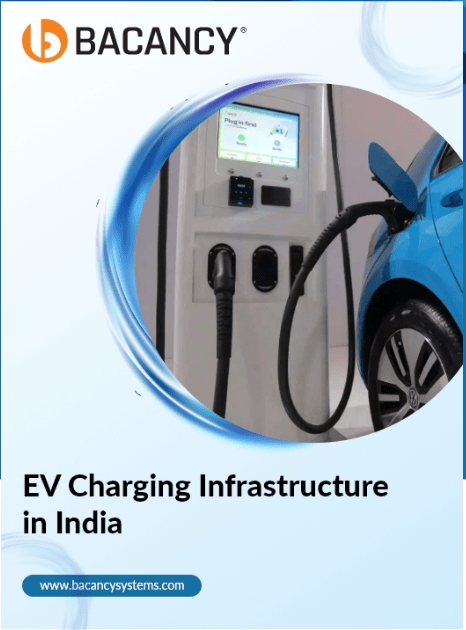| Comparison Pointer | AC Charger | DC Charger |
|---|---|---|
| Effort of Installation | Easy to install | Complexity in setting up and requires larger space |
| Availability | Readily available | Available at certain charging stations |
| Speed of Charging | Slow | Fast |
| Power grid requirement | Limited power is needed since it relies on the onboard charger | Requires high power supply |
| Charging Ability | Charges at a continuous rate, depending upon the power capacity of the onboard charger | Can accommodate 50% more EVs at the same time compared to AC charging. | Applications | Utilized at home or at dedicated EV charging stations | Available near highways, petrol pumps, and specific fast charging locations |
| Cost | Cost-effective setup | Significantly Expensive |
Quick Summary:
The most significant component of an electric vehicle is its electric motor, which is powered by an electric battery. And there are two types of electric supply to charge the battery, Ac charging and DC charging. This blog is intended to aid the EV infrastructure owners in assessing the charging needs through the lens of an EV owner. So let’s understand the differences between AC vs DC Charger in-detail.
Table of Contents
Introduction
We have come a long way after reinventing the wheel in the mobility sector, which has affected each of our lives in more than one way. The transition journey may look like a fish out of the water, from creating a whole range of IC engines to the full scaling adoption of battery-powered vehicles.
More specifically, it is challenging in the current scenario to refuel an electric vehicle (EV) compared to a gasoline-powered one. Unlike the latter, with not very frequently available EV charging stations, it is still a tough row to hoe for the driver to replenish the car for the desired travel commute. It takes quite of an effort to reach an EV station and bear the patience to charge an electric car.
In technical terms, the most critical factors involved in the EV charging process are the compatibility between the vehicle and charger and the time invested in charging. There are two main EV chargers: AC chargers (alternating-current) and DC chargers (direct-current). On common grounds, they are classified as slow (AC) and fast (DC) chargers.
EV charging is no different than any electric gadget that undergoes a charge. The mechanism remains the same. Power is drawn from the grid to the charger plugged into the device.
Similarly, the power is transferred from the grid to the charger in an electric car and eventually flows into the vehicle.
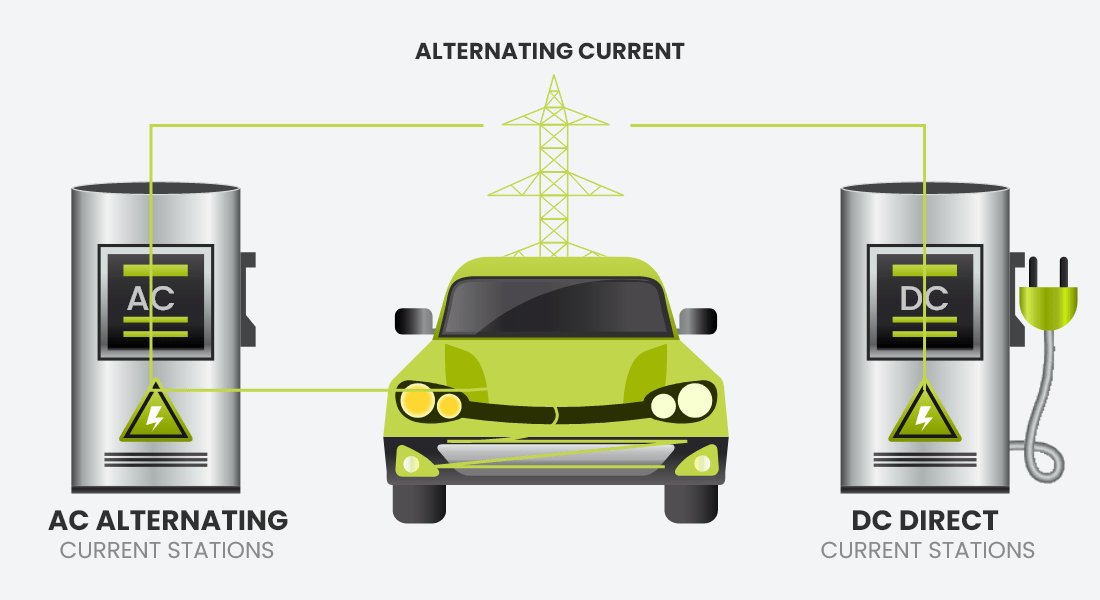
The thumb rule remains the same for the power drawn from the grid, which is AC, however, the final source, i.e., the battery, stores current in DC form only. Hence before commencing the charging operation for an EV, it is essential to be cognizant of the type of charger being used.
To present in a nutshell, there are two feasible ways of AC to DC conversion in EVs. The major classification has been done according to the source of the conversion for the same.
Let us deep delve into the two and analyze the comparison of AC vs DC chargers.
It’s easy to combat range anxiety
Our DC fast charger keeps you moving when you commute intercity or exceed your daily range locally.
AC vs DC Charger: Difference Explained
Before calling the battle for AC vs DC charger, it is noteworthy to have a bird’s view of how an EV operates. The two main components responsible for an EV’s charging effort are its battery and, most importantly, the electric motor. Just like an IC engine, the motor is the main driving unit in an EV which draws DC current from the battery to propel the vehicle.
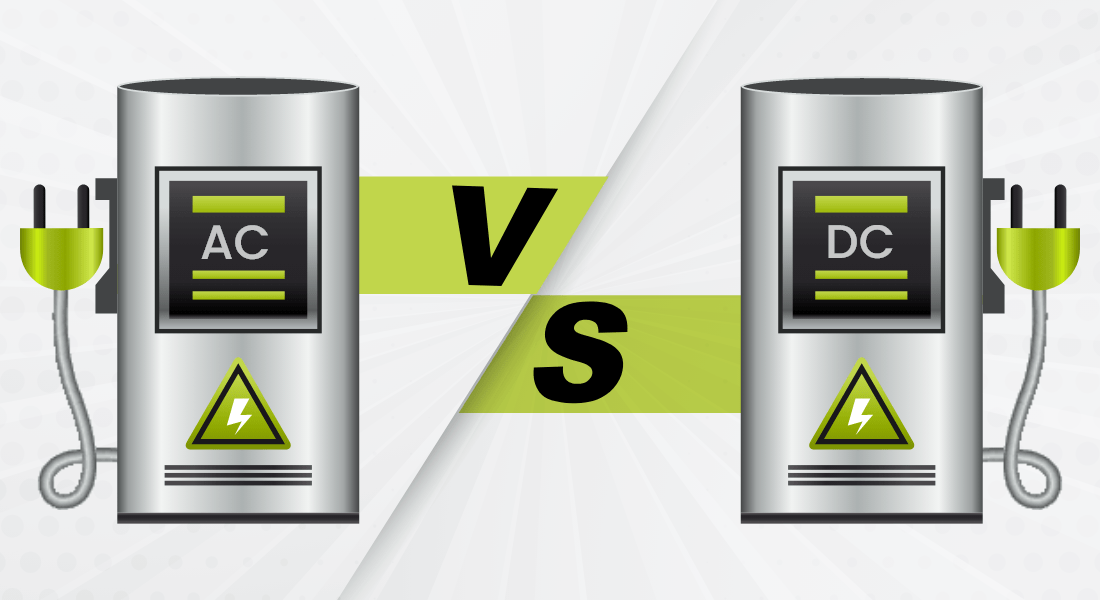
AC Chargers:
An AC charger is always coupled with a built-in setup with an AC charging infrastructure, known as the onboard charger. The role of an onboard charger is energy conversion from AC to DC and supply the current to the heart of the EV, i.e. the battery pack.
AC charging also referred to as ‘Slow Charging’ is the most common form of charging due to the high charging point availability and ease of installation. AC chargers can be installed at home (type 1) or are readily present at the EV charging stations (type 2). A range anywhere between 22kW-43kW per km/h is achieved with fast AC chargers.
Depending upon the intake capacity of the onboard charger, it may take a couple of hours or overnight to full-charge an electric car.
DC Chargers:
The functioning of a DC charger is quite different in the sense that there is no onboard charger present during an EV charging operation since the DC charger has a converter. AC current from the grid is involuntarily converted to DC before entering the battery pack.
The charging curve deteriorates with time with a peak and charging at the initial state of charge followed by a downfall in the acceptance rate of power by the battery as it reaches its total capacity. The charging speed is quite high, with a range of 50-100 kW per km/h with fast DC charging. 80% battery charge can be achieved within 30 minutes of fast charging.
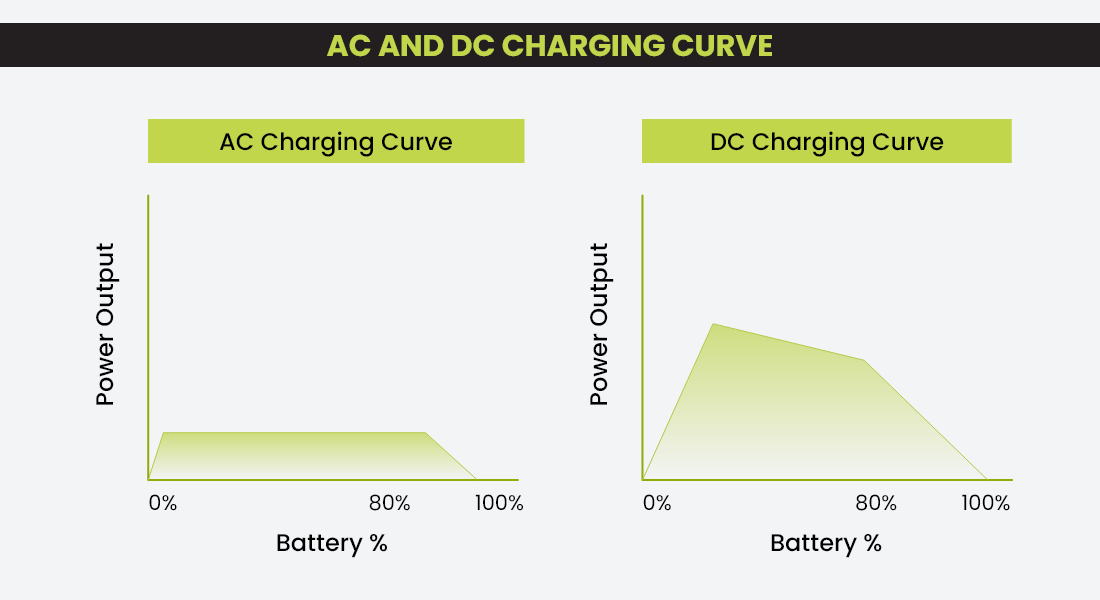
Less hassle – easy charging – longer battery life
Our AC fast charger is India’s most trusted and reliable solution in the EV market. Book your charger to witness the precision and accuracy of EV charging.
AC vs DC Charger Comparison
Let us have a quick comparison summary between the AC and DC chargers.
You might want to read how DC fast charging works
AC vs DC Charging: Adopting the Most Practical Solution
It is quite evident that the EV charging infrastructure is scaling up consistently, keeping up with the requirements of the higher and higher voltage needs as new electric cars are rolling out in the EV market. The question is what should be the course of action for the EV infrastructure owners in the upcoming times? What are the EV drivers more inclined towards? Is it the AC vs DC charger battle that is welcoming concerns for potential EV owners? Well, We have our in-depth Research white-paper on EV charging infrastructure in India.
Well, the truth is that no defined hacksaw can be a cut-through solution for all the EVs in the market. What’s interesting to note that it’s not about the battery or motor capacity that should be the deciding factor. In the present times, it’s not about the EVs in general, but the driver’s behavior pattern which is the key to finding the most practical adaptable solution for different EVs on road.
Let’s compare 2 EVs with different driving behaviors and range coverage. One is operated for 24 hours every day to travel intercity, and the other is used during the peak hours of the day to cover specific areas.
Clearly, the first electric car owner has a shorter bandwidth to restore the battery charge, supposing it to be a timeframe somewhere between 1-2 hours. The 2nd EV can be kept on standby anywhere between 10-12 hours at the charging facility to fulfill the journey, considering the range that needs to be covered based on duration.
Now, considering the time available for charging in both scenarios, if the 1st EV goes for an AC charging for up to 1-2 hours, it can only acquire 50% of the total battery charge, making it difficult to sustain for the entire day of commute. On the other hand, if the 2nd vehicle undergoes DC fast charging, then it may be an expensive option, considering the flexibility it has to save the expense for the same.
There is no right or wrong here, but to have the best possible practical solution, the first car has to save time and enable better range, and the second one to be more cost-effective, and sustainable in the interest of the battery’s health. Alternatively, a mix and match of both types of charging can also aid the driver in hitting the ground in terms of combating range anxiety.
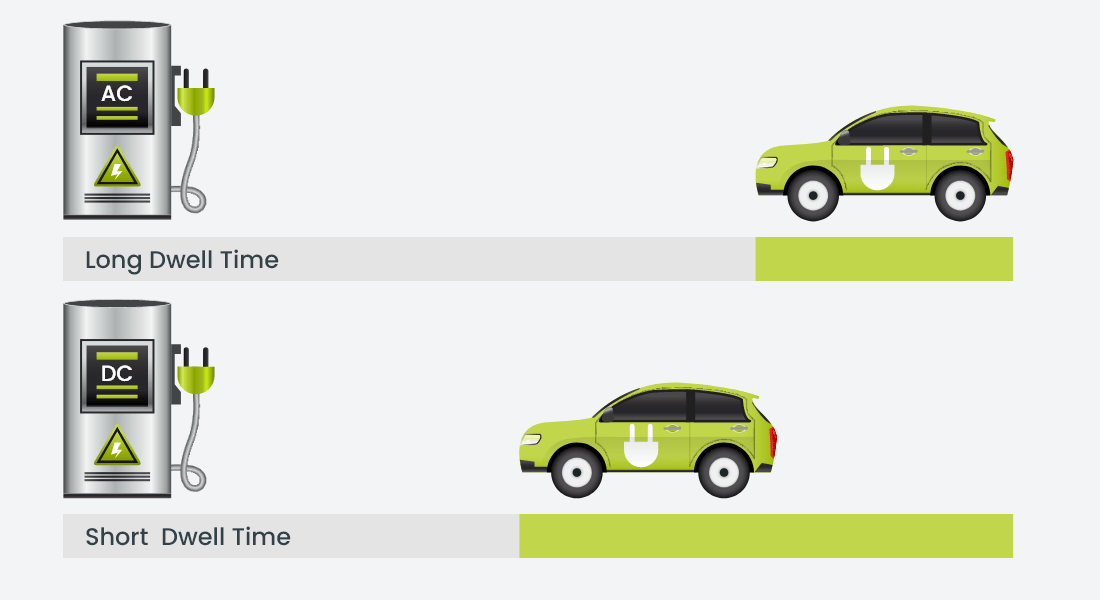
Conclusion
That’s a wrap-up for the battle AC vs DC charger, and we hope that you would have had an experience that caters to a solution-centric approach for the EV owners driving a sustainable EV charging ecosystem.
It is ideal to go with a DC fast charger with EV charging as it saves the upfront costs of acquiring an onboard charger and enables drivers to get on the road in the shortest possible time. However, the cost of installation, maintenance, and feasibility of automation are some of the areas that may be a cause of concern. In contrast, drivers with an ample amount of standby time covering shorter trips can definitely go with AC charging, saving the cost
The hybrid is certainly the most powerful cycle of charge for an EV, fulfilling as it provides all the possible benefits of both types of charging.
Bacancy is India’s most trusted EV charging infrastructure partner, catering to a wide array of solutions for faster EV adoption and infrastructure development, saving the time and cost to market the charging solutions.
Your Success Is Guaranteed !
We accelerate the release of digital product and guaranteed their success
We Use Slack, Jira & GitHub for Accurate Deployment and Effective Communication.

